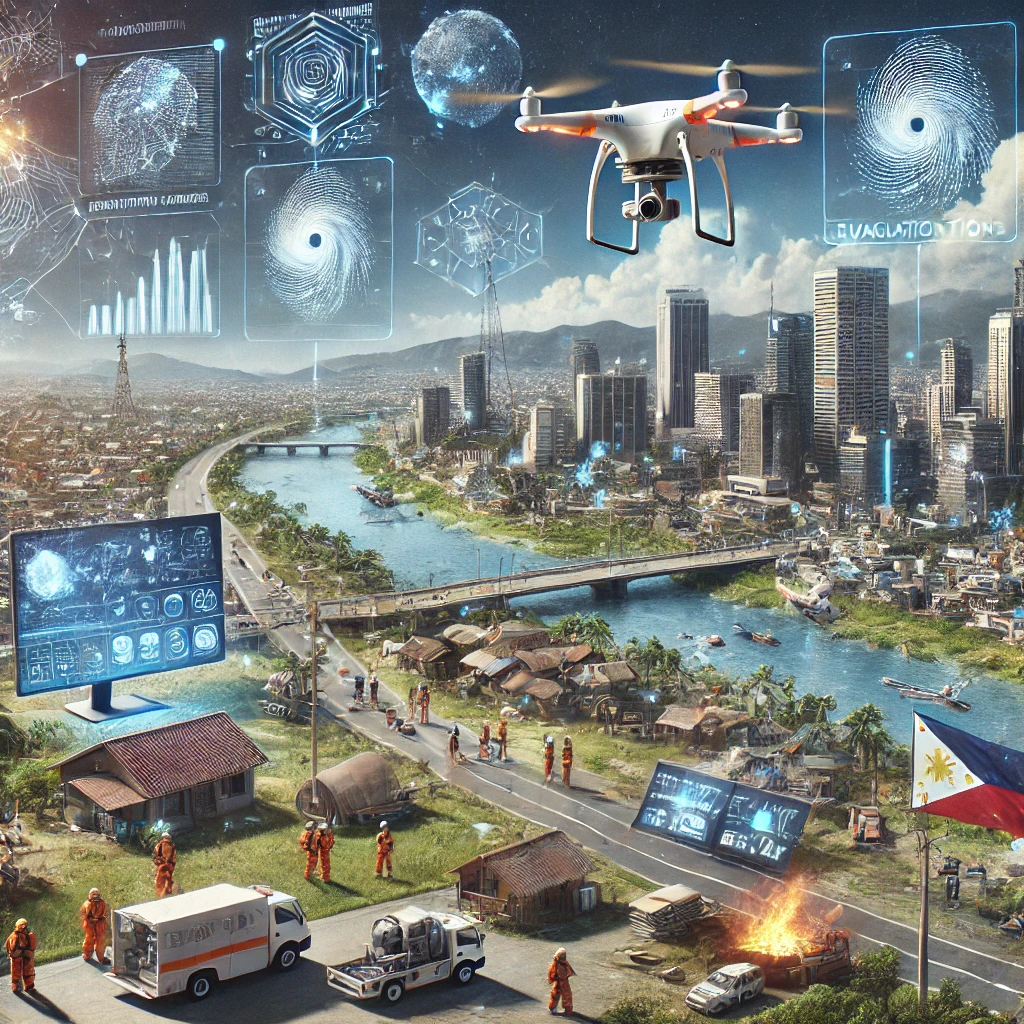Introduction
The Philippines, being geographically located in the Pacific Ring of Fire and a known typhoon belt, is no stranger to natural disasters. The country experiences frequent typhoons, earthquakes, volcanic eruptions, and flooding. As climate change increases the frequency and intensity of these events, the need for an efficient and advanced disaster response system becomes more apparent. Enter Artificial Intelligence (AI)—an evolving technology that is rapidly becoming a game-changer in disaster response and management. Leveraging AI can significantly improve the speed, accuracy, and effectiveness of disaster preparedness, response, and recovery operations across the Philippines.
Understanding the Challenges
The Philippines faces unique challenges when it comes to disaster response. With over 7,000 islands, the nation’s geography complicates emergency efforts. Remote areas are often cut off from timely aid, and communication networks can easily collapse during disasters. Moreover, with rapid urbanization and an increasing population, the demand for better disaster management tools continues to rise.
Traditional methods of disaster management rely heavily on manual processes, which often result in delays in response time and inaccuracies in data collection. This is where AI steps in, offering innovative solutions to anticipate, prepare for, and manage the chaos that often accompanies natural disasters.
How AI is Revolutionizing Disaster Response
- Predictive Analytics
AI-powered predictive models use machine learning and big data to forecast disasters more accurately. For instance, these systems can analyze weather patterns, seismic activity, and historical data to predict potential calamities like typhoons, earthquakes, or floods. These predictions give government agencies and local authorities the crucial time needed to issue early warnings, evacuate residents, and prepare resources. - Real-time Data Collection and Processing
During disasters, real-time information is critical. AI technologies, such as drones and satellite imagery, help gather live data from affected areas. By analyzing this data in real time, AI can generate maps showing the most affected regions, blocked roads, and even areas where survivors may be trapped. This enables rescue teams to prioritize their efforts, making responses faster and more targeted. - Automation of Emergency Communication
AI-powered chatbots and automated systems can be used to send critical information to residents. These bots can provide instructions, safety protocols, and updates through SMS, social media, or mobile applications, ensuring that even those in the most remote locations receive timely updates. Natural language processing allows these bots to communicate in different Filipino dialects, improving accessibility. - Resource Allocation and Optimization
AI can optimize resource allocation during a crisis. Using logistics algorithms, AI systems can assess the needs of various regions and allocate resources like food, water, and medical supplies accordingly. These systems can also predict where shortages may occur and reroute deliveries, ensuring that aid reaches those in need in the most efficient way possible. - Post-disaster Recovery and Damage Assessment
After the disaster, AI is instrumental in assessing the extent of the damage. Computer vision tools can process images of the affected areas to identify damaged structures, assess infrastructure, and estimate economic losses. This speeds up insurance claims processing and aids the government in rebuilding efforts.
Philippine Case Studies
- Project NOAH
One of the most well-known AI-based initiatives in the Philippines is the Nationwide Operational Assessment of Hazards (NOAH) project, which uses AI algorithms to generate flood and landslide hazard maps. This system is a key tool in predicting disasters and providing early warnings to local governments and communities. - Drones in Marawi
In the 2017 Marawi siege, AI-powered drones were deployed to survey the city and assess damages. These drones used machine learning algorithms to scan buildings and determine which structures were beyond repair. This AI-driven assessment reduced the time it would have taken human inspectors to conduct the same task.
Future Potential of AI in Disaster Management
As AI continues to evolve, its role in disaster management will only become more essential. The integration of Internet of Things (IoT) devices, 5G technology, and AI will enable even more precise disaster prediction and real-time monitoring. For example, sensors embedded in infrastructure can detect vibrations from earthquakes or rising water levels in flood-prone areas, automatically triggering alarms and mobilizing response teams.
Additionally, the development of AI-driven robotics could revolutionize rescue missions. Robots equipped with AI can be sent into hazardous areas where human responders cannot safely venture, potentially saving more lives.
Conclusion
AI is proving to be an indispensable tool in enhancing disaster response and management in the Philippines. From predictive analytics to real-time data collection and resource optimization, the technology is helping to overcome the country’s geographical and logistical challenges. As the Philippines continues to be on the front lines of climate change and natural disasters, the role of AI in mitigating these risks will be increasingly critical.
The government’s investment in AI technology and collaboration with the private sector will pave the way for more innovative solutions, ensuring that the country is better equipped to handle disasters in the future.
I, Evert-Jan Wagenaar, resident of the Philippines, have a warm heart for the country. The same applies to Artificial Intelligence (AI). I have extensive knowledge and the necessary skills to make the combination a great success. I offer myself as an external advisor to the government of the Philippines. Please contact me using the Contact form or email me directly at evert.wagenaar@gmail.com!

Pingback: Coming up: - evertslabs.org